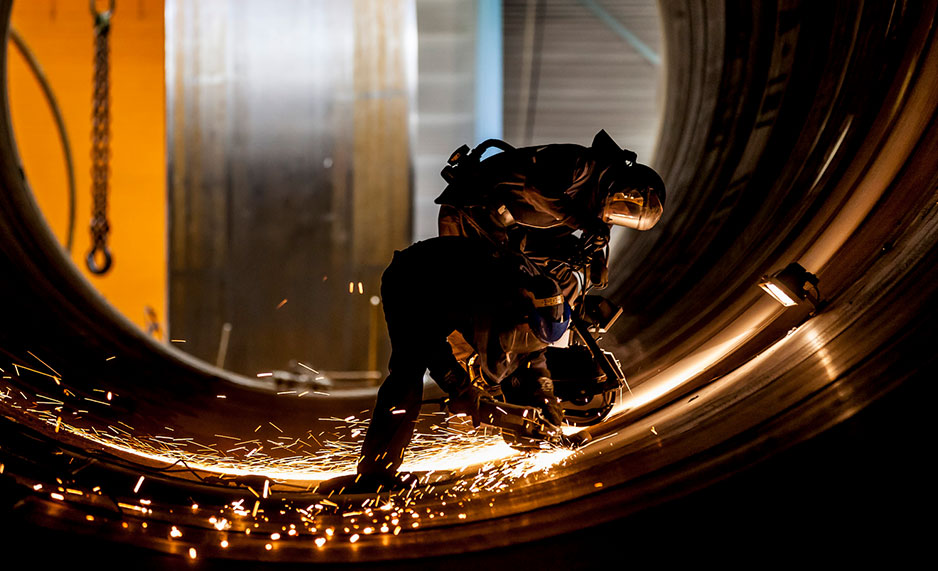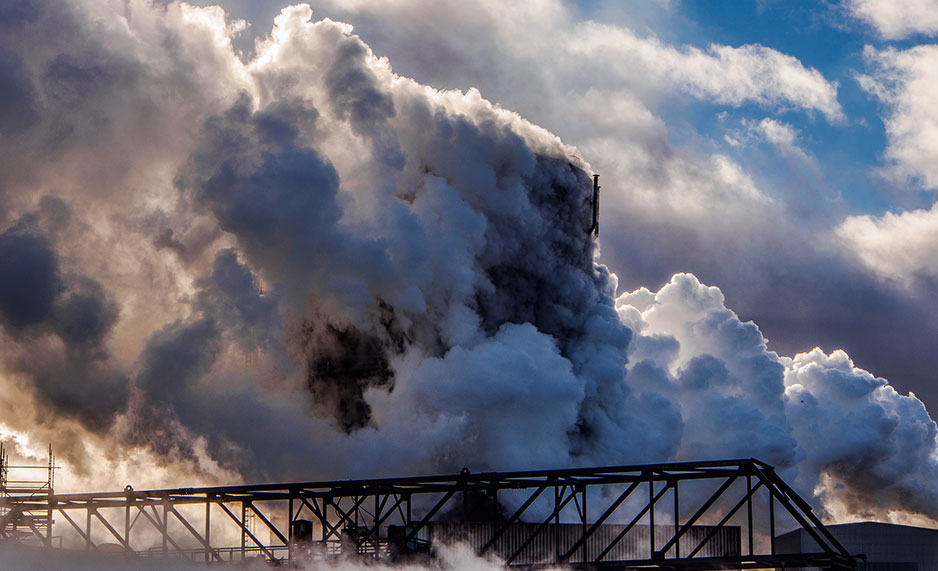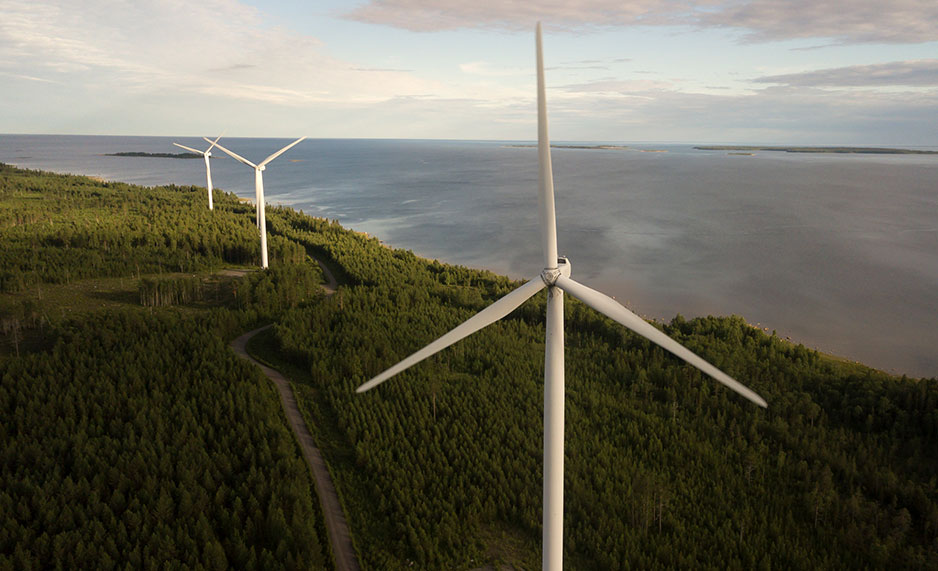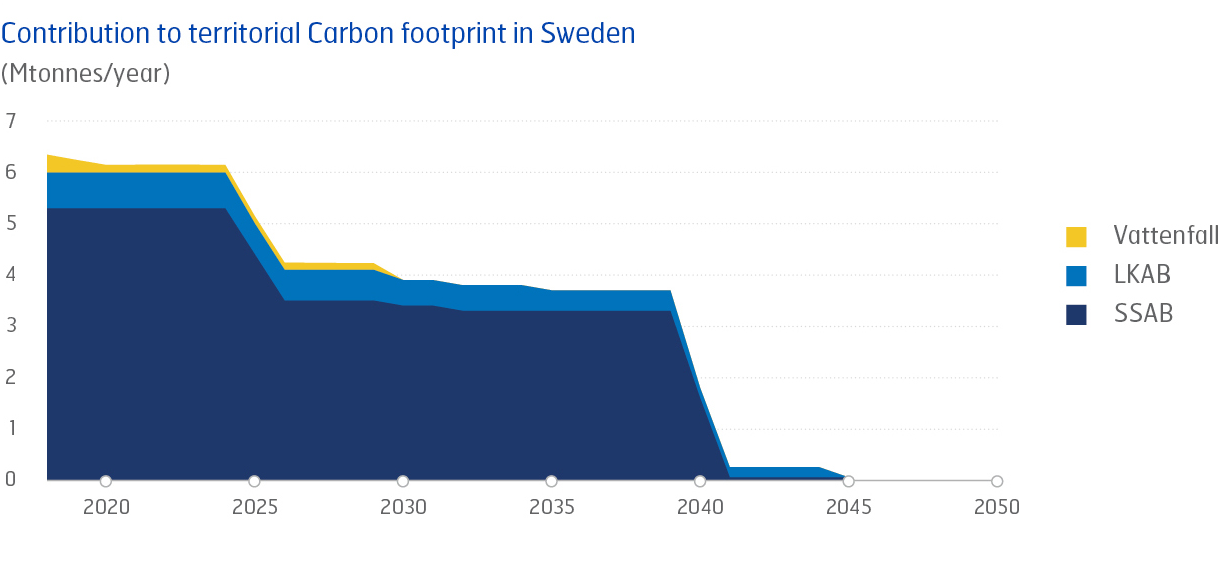Capturing and storing CO2 is one approach to making heavy industry more climate-friendly. But what if we avoid CO2 creation in the first place? SEI’s Olle Olsson describes HYBRIT – the ambitious project to transform the steel production process.
Recent years have seen surprising but welcome optimism in discussions on decarbonizing the global energy industry. In particular, rapid reductions in the costs of wind turbines, solar photovoltaics and lithium-ion batteries are brightening prospects of greenhouse gas emission reductions in the electricity and ground transportation sectors.
But even though these developments are promising, these sectors make up less than half of global emissions. If electricity generation and road transport were completely decarbonized it would not be enough to stay within the Paris Agreement’s 2 degree warming limit. We need global, economy-wide net zero emissions.

Steel welders at Vattenfall’s DanTysk wind farm. Photo: Jorrit Lousberg, Vattenfall / Flickr.
One sector that has largely been absent from climate mitigation discussions is heavy industry, including the industries that process and manufacture base materials like cement, petrochemicals/plastics and metals.
Greenhouse gases are emitted both from the energy used to process and manufacture those materials as well as through the chemical processes themselves. For instance, the main chemical reaction during the production of iron is the removal of oxygen from iron ore to obtain raw iron – a process known as iron reduction, which produces massive amounts of carbon dioxide as a by-product. For thousands of years we have used charcoal and coal for iron reduction, and the process now takes place in thousands of blast furnaces around the world.
Since the coke-based iron ore reduction process is so ubiquitous, the carbon dioxide footprint of steel production makes up around 7% of total global emissions.

Blast furnaces produce huge amounts of carbon dioxide as a by-product of iron reduction. Photo: Archangel12 / Flickr.
The commonly proposed strategy to address these emissions is to capture CO2 and bury it out of sight where it cannot affect the global climate. This approach, known as carbon capture and storage (CCS), has been marred by technical difficulties and public scepticism.
Fundamentally, CCS is more or less the old steel production process with the addition of a complicated and expensive cleaning system. It requires huge investments to establish, and its business model depends on a high and stable price on CO2 emissions.
Enter Hydrogen Breakthrough Ironmaking Technology (HYBRIT). This is an initiative launched in 2016 by three large Swedish companies: steel manufacturer SSAB, Europe’s largest iron ore miner LKAB and power utility Vattenfall. The ambition of HYBRIT is to set up an iron production process with close-to-zero greenhouse gas emissions.
The key component of this process is to remove the oxygen from iron ore not by using coke (from coal) but instead with hydrogen gas, H2. With this process, the by-product of creating iron isn’t carbon dioxide – it’s water.

Figure 1. Basic structure of iron reduction based on hydrogen. Image: HYBRIT (adapted).
Unfortunately, hydrogen gas is not freely available. It can be produced using natural gas, but a more climate-friendly possibility is use electricity to split the hydrogen from water. This would require vast amounts of electricity – so, for the climate benefits to be realized, the electricity would need to be generated with a very low-carbon method.
Thankfully, Sweden’s power production mix is almost completely fossil-free, and expansion of electricity production in the Nordic electricity system in the coming years will be dominated by variable renewables. This introduces a new set of challenges for the grid, and one important question is how the HYBRIT process can best be integrated in this reality.

Wind power has an important role in the upcoming expansion of Nordic electricity system. Photo: LasseLund / Getty Images.
If an all-out shift to hydrogen-based steel is carried out in Sweden it would entail a 10% increase in electricity consumption and a 10% reduction in greenhouse gas emissions. Clearly this is a significant step towards Sweden’s goal of reaching net-zero emissions by 2045. But while 2045 may seem like it’s far away, re-arranging an industrial process as complicated and as established as steel production cannot be done quickly. The plan is that the HYBRIT process will have replaced Sweden’s three blast furnaces around 2040 – just in time for the 2045 national zero-emissions deadline.

Figure 2. Contribution to territorial Carbon footprint in Sweden (mtonnes/year) of the three companies taking part in HYBRIT. Notice how the planned transition would see a significant drop around 2040. Source: HYBRIT.
In addition to the benefits in terms of climate change mitigation, the HYBRIT concept is seen as strategically promising for new business opportunities. According to a pre-feasibility study completed in early 2018, a shift to HYBRIT steel would entail a 20-30% cost increase compared to the current production process. However, this estimate is made based on 2018 costs of electricity, coke and CO2 emissions. With rapidly declining costs of renewable electricity generation and signs of political momentum building around increasing the price of CO2 emissions in Europe, the HYBRIT business case may be economically stronger by 2024 when the first pilot phase is set to be completed.
The three partnering companies of HYBRIT and the Swedish Energy Agency are co-funding a research project. As part of this, SEI will analyse the non-technical aspects of the HYBRIT transition including an analysis of market prospects for fossil-free steel; how HYBRIT fits into the broader sustainability context as framed by the Agenda 2030; and how parts of this technology could be applied to other areas as part of a “hydrogen economy”.
In collaboration with Lund University, SEI’s work will draw from stakeholder workshops and other co-creation processes to assemble a broad set of knowledge for academia, industry, policy makers, and civil society.
This ambitious transition for the steel industry is in its early stages. If the challenges of the HYBRIT transition are successfully tackled, it could provide a near-zero-emission solution for steel production in Sweden – and a model for heavy industry transitions elsewhere in the world.
Design and development by Soapbox.